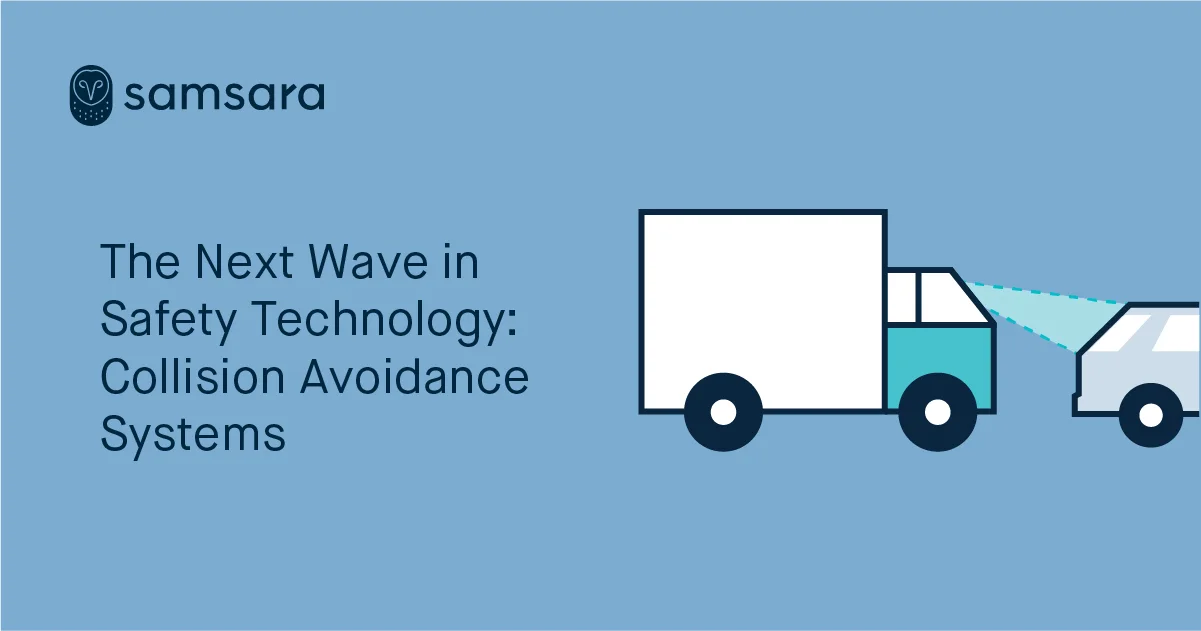The Next Wave in Safety Technology: Collision Avoidance Systems
September 30, 2020

Get Started with Samsara
Check our pricesKey Takeaways
A collision avoidance system, also known as a driver assistance system, is a safety system designed to prevent a collision or decrease its severity in the few seconds before it occurs. In this article, learn about the different types of collision avoidance systems and how they can help your fleet stay safe.
According to the National Highway Traffic Safety Administration (NHTSA), over two million motor vehicle accidents in the United States were caused by rear-end collisions in 2017 alone. Though the specific causes of these collisions vary, many of them could have been detected sooner—or even avoided—with the assistance of a collision avoidance system. In fact, a study conducted by the Insurance Institute for Highway Safety (IIHS) in 2018 found that 62% of drivers paid closer attention to the road and used turn signals more frequently when a collision avoidance system was installed in their vehicle.
If your fleet is looking to reduce the number of safety incidents, adopting an in-cab collision avoidance solution can be a great first step. Read on to learn more about this technology and how it can improve the safety of your fleet.
What is a collision avoidance system?
A collision avoidance system, also known as a driver assistance system, is a safety system designed to prevent a collision or decrease its severity in the few seconds before it occurs. Certain systems use AI machine vision technology—while others also use dash cams for images and GPS for location information—to detect an imminent collision. Once a collision is detected, these systems can alert a driver via sound or light to help prevent the collision from occurring.
The different types of collision avoidance systems
There are many different collision avoidance systems that can be used by fleets to improve safety. Popular systems include:
Forward collision warning system (FCW): An FCW system is an advanced safety technology that monitors a vehicle's speed, the speed of the vehicle in front of it, and the distance between the vehicles. If vehicles get too close due to the speed of the rear vehicle, the FCW system will warn that driver of an impending crash.
Lane departure warning system: This type of collision avoidance system is designed to alert drivers if their vehicle begins to drift out of their lane, and can be particularly useful for aiding with blind spot detection in real time.
Pedestrian detection system: Pedestrians and cyclists can be some of the most vulnerable targets for vehicles, with pedestrians accounting for nearly a quarter of all fatalities on the road. A pedestrian detection system uses sensors to identify human movement on the road—like cyclists or jaywalkers—in an attempt to help drivers see a moving object before it’s too late.
Automatic braking system: An AEB is a technology that automatically activates the vehicle’s braking system when it senses an oncoming object. Certain automatic emergency braking (AEB) systems will only apply a portion of the braking power to allow the driver more time to step in, while other systems will pump the brakes until the vehicle comes to a full stop.

Make safety a competitive advantage for your business
90% of customers say Samsara has helped improve safety within their fleet.
Learn MoreHow a collision avoidance system can keep your fleet safe
Collision avoidance systems can be a great way to help your vehicles steer clear of safety incidents while also serving as a valuable tool to train drivers on safety best practices. Because these monitoring systems use sensor technology to detect impending collisions, they’re able to alert drivers of a problem before it’s too late. Plus, they can have a significant impact on your bottom line: collision avoidance systems can help reduce the number of costly safety-related incidents that occur across your fleet.
To learn more about how Samsara can help your fleet stay safe, read more about our AI dash cam technology or reach out for a free trial today.